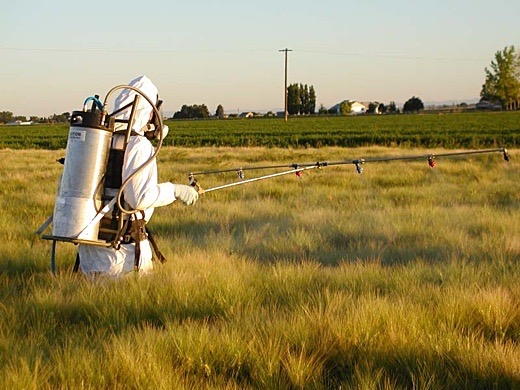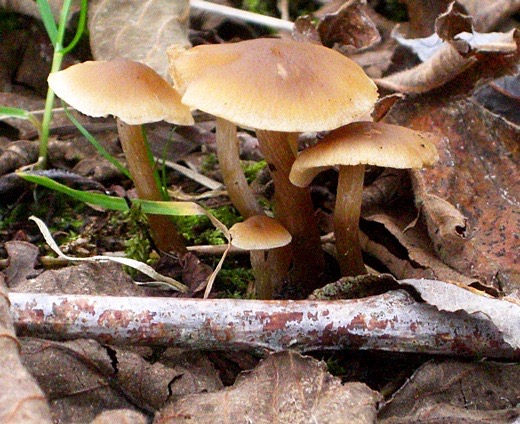SUBHEAD: For $43billion the Chinese chemical corporation gains control of Swiss Syngenta.
By Michael Shields on 5 May 2017 for Rueters -
(http://uk.reuters.com/article/us-syngenta-ag-m-a-chemchina-idUKKBN1810CU)

Image above: Syngenta corporate logo wall sign. From original article.
ChemChina [CNCC.UL] has won more than enough support from Syngenta shareholders to clinch its $43 billion takeover of the Swiss pesticides and seeds group, the two companies said on Friday.
The deal, announced in February 2016, was prompted by China's desire to use Syngenta's portfolio of top-tier chemicals and patent-protected seeds to improve domestic agricultural output. It is China's biggest foreign takeover to date.
It is one of several deals that are remaking the international market for agricultural chemicals, seeds and fertilisers.
The other deals in the sector are a $130 billion proposed merger of Dow Chemical and DuPont, and Bayer's plan to merge with Monsanto.
The trend toward market consolidation has triggered fears among farmers that the pipeline for new herbicides and pesticides might slow. Regulators have required some divestments as a condition for approving the Syngenta deal.
Based on preliminary numbers, around 80.7 percent of Syngenta shares have been tendered, above the minimum threshold of 67 percent support, the partners said in a joint statement.
The agreed offer is for $465 per share. Syngenta shares closed on Thursday at 459 Swiss francs ($464.5), and rose 0.4 percent in early trade on Friday to 461.20 francs.
The transaction is set to close on May 18 after the start of an additional acceptance period for shareholders and payment of a special 5-franc dividend to holders of Swiss-listed shares on May 16. Holders of U.S.-listed depositor receipts will get the special dividend in July.
Syngenta shares will be delisted from the Swiss bourse and its depository receipts from the New York Stock Exchange.
Chief Executive Erik Fyrwald played down the transition from publicly listed group to becoming part of a Chinese state enterprise, stressing that Syngenta would remain a Swiss-based global company while under Chinese ownership.
"It is very important to understand that this is a financial transaction," he told broadcaster CNBC in an interview.
He saw two major changes: giving Syngenta a long-term shareholder to accompany it during the 12 years it typically takes to discover and launch new products, and helping to overhaul Chinese agriculture, which he called very much behind the global standard.
He said he expected the acceptance rate to easily surpass 90 percent, with a squeeze-out of remaining shareholders to follow if needed in June.
Funding for the acquisition was clear and irrevocable, while refinancing the company after the transaction closed was still being discussed.
"I am very confident we are going to have a strong balance sheet as agreed," he said, with an investment-grade rating that would let it pursue market share growth, investments, capital spending and acquisitions.
Syngenta sells its products in more than 90 countries under such brand names as Acuron, Axial, Beacon and Callisto. It sells seeds such as cereals, corn, rice, soybeans and vegetables.
.
By Michael Shields on 5 May 2017 for Rueters -
(http://uk.reuters.com/article/us-syngenta-ag-m-a-chemchina-idUKKBN1810CU)

Image above: Syngenta corporate logo wall sign. From original article.
ChemChina [CNCC.UL] has won more than enough support from Syngenta shareholders to clinch its $43 billion takeover of the Swiss pesticides and seeds group, the two companies said on Friday.
The deal, announced in February 2016, was prompted by China's desire to use Syngenta's portfolio of top-tier chemicals and patent-protected seeds to improve domestic agricultural output. It is China's biggest foreign takeover to date.
It is one of several deals that are remaking the international market for agricultural chemicals, seeds and fertilisers.
The other deals in the sector are a $130 billion proposed merger of Dow Chemical and DuPont, and Bayer's plan to merge with Monsanto.
The trend toward market consolidation has triggered fears among farmers that the pipeline for new herbicides and pesticides might slow. Regulators have required some divestments as a condition for approving the Syngenta deal.
Based on preliminary numbers, around 80.7 percent of Syngenta shares have been tendered, above the minimum threshold of 67 percent support, the partners said in a joint statement.
The agreed offer is for $465 per share. Syngenta shares closed on Thursday at 459 Swiss francs ($464.5), and rose 0.4 percent in early trade on Friday to 461.20 francs.
The transaction is set to close on May 18 after the start of an additional acceptance period for shareholders and payment of a special 5-franc dividend to holders of Swiss-listed shares on May 16. Holders of U.S.-listed depositor receipts will get the special dividend in July.
Syngenta shares will be delisted from the Swiss bourse and its depository receipts from the New York Stock Exchange.
Chief Executive Erik Fyrwald played down the transition from publicly listed group to becoming part of a Chinese state enterprise, stressing that Syngenta would remain a Swiss-based global company while under Chinese ownership.
"It is very important to understand that this is a financial transaction," he told broadcaster CNBC in an interview.
He saw two major changes: giving Syngenta a long-term shareholder to accompany it during the 12 years it typically takes to discover and launch new products, and helping to overhaul Chinese agriculture, which he called very much behind the global standard.
He said he expected the acceptance rate to easily surpass 90 percent, with a squeeze-out of remaining shareholders to follow if needed in June.
Funding for the acquisition was clear and irrevocable, while refinancing the company after the transaction closed was still being discussed.
"I am very confident we are going to have a strong balance sheet as agreed," he said, with an investment-grade rating that would let it pursue market share growth, investments, capital spending and acquisitions.
Syngenta sells its products in more than 90 countries under such brand names as Acuron, Axial, Beacon and Callisto. It sells seeds such as cereals, corn, rice, soybeans and vegetables.
.


